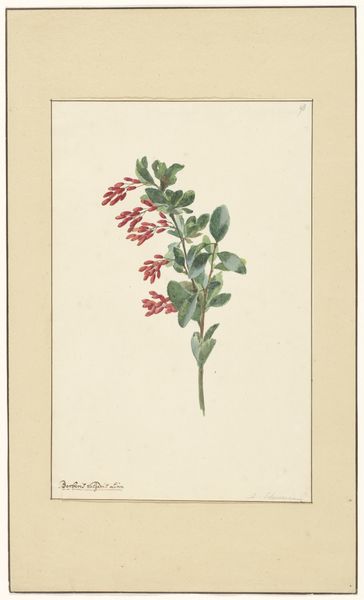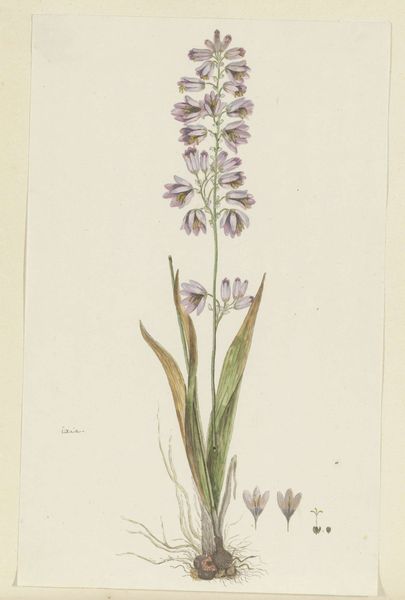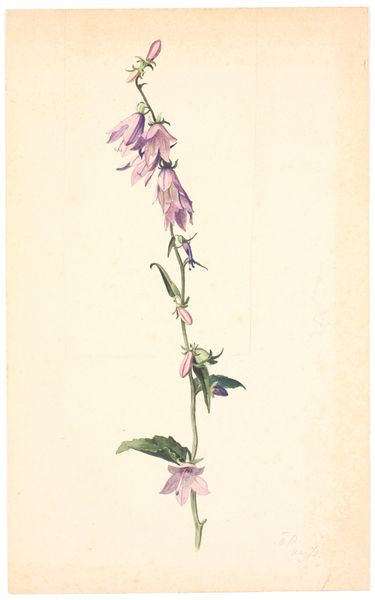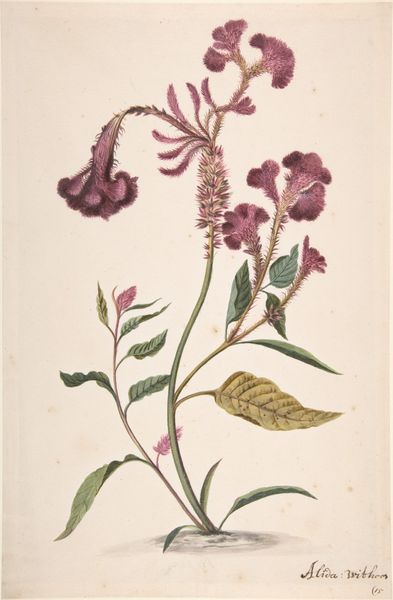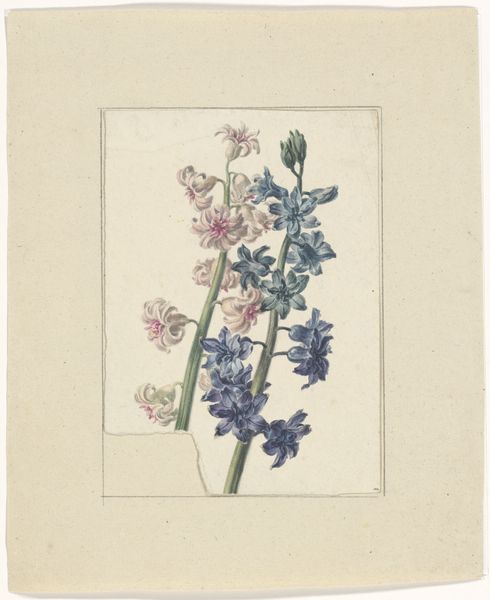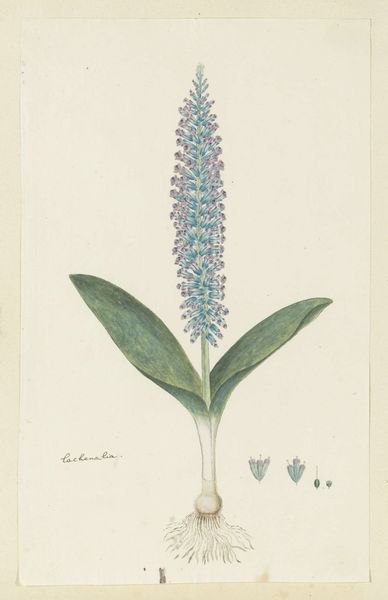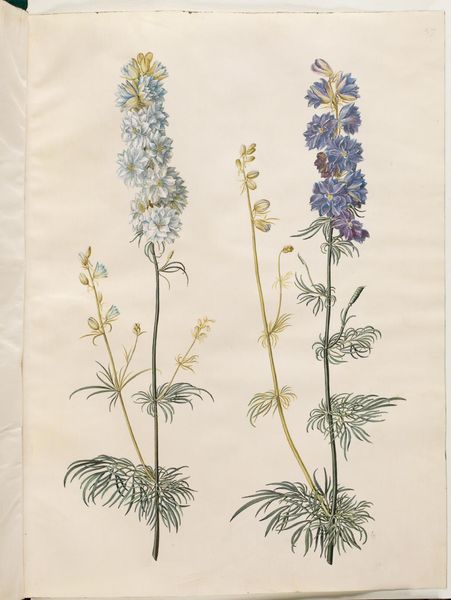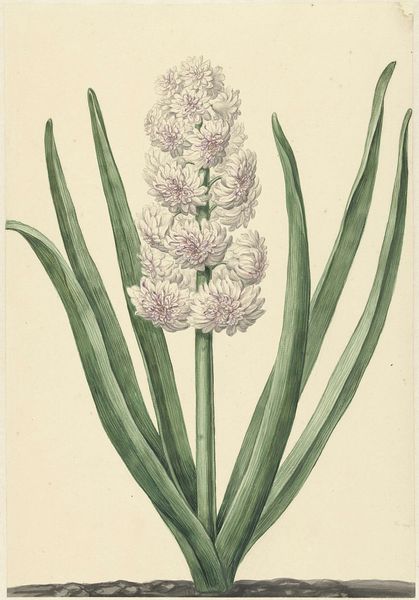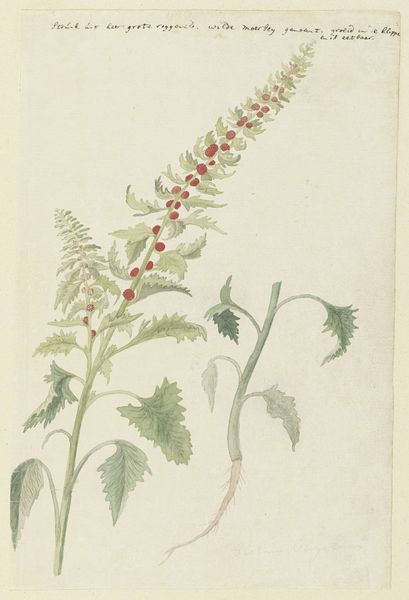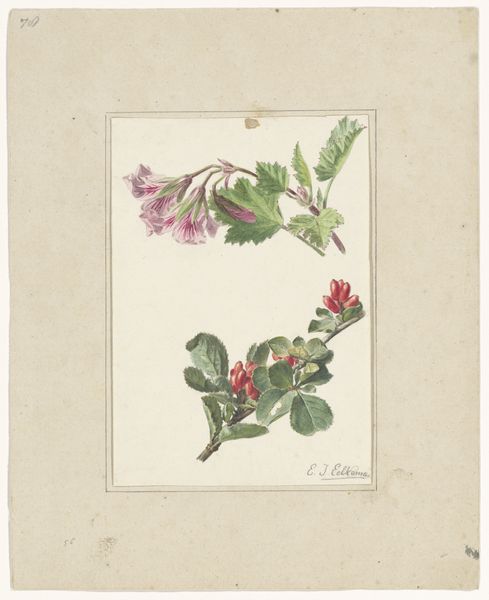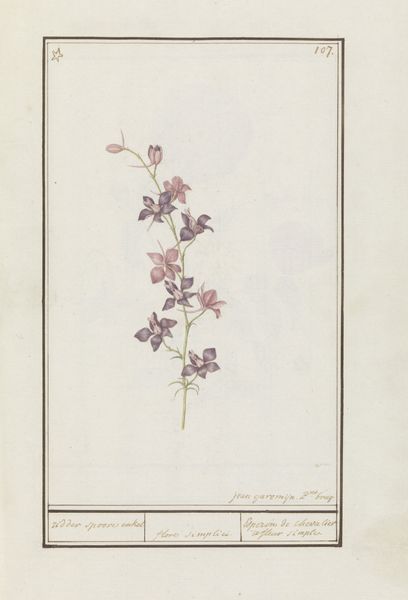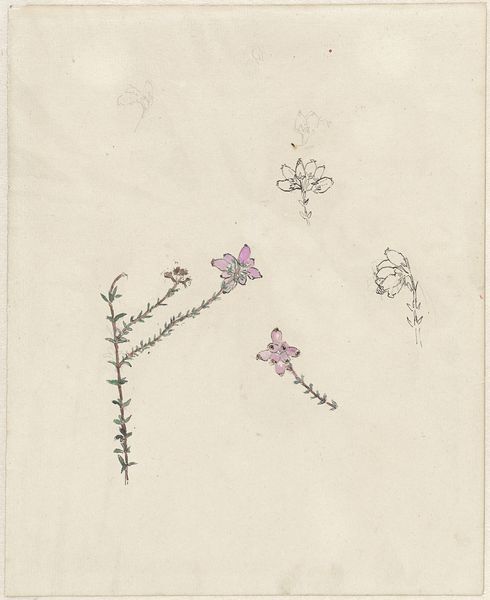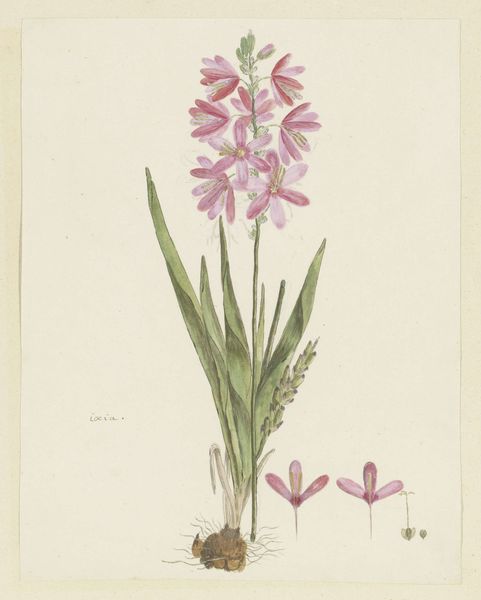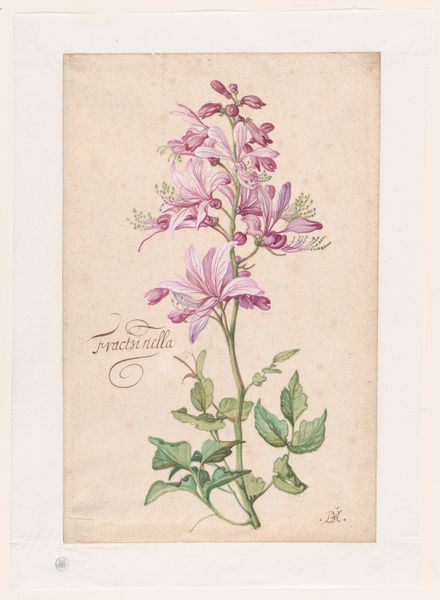
drawing, painting, paper, watercolor
#
drawing
#
painting
#
paper
#
watercolor
#
academic-art
#
botanical art
#
watercolor
Dimensions: height 298 mm, width 291 mm
Copyright: Rijks Museum: Open Domain
Curator: So delicate. My first thought is the paper looks so fragile, as if it would crumble at the slightest touch. Editor: Yes, that’s a great observation. What we have here is a watercolor and drawing on paper, dating from approximately 1700 to 1800. It’s titled "Rood peperboompje op een grondje". Curator: Roughly translated, "red daphne on a patch of ground". I suppose the modern title wouldn't quite have the same rustic ring to it, right? Looking at the style, it reminds me of those meticulous botanical studies produced during the Enlightenment. Very precise. Editor: Precisely! And these academic studies served multiple functions—scientific documentation, certainly, but also the assertion of colonial power through the cataloging and ownership of the natural world. The very act of rendering this flower on paper…it’s imbued with power dynamics. What does the artist choose to portray? And who benefits from this representation? Curator: True. Even something as seemingly innocent as a flower painting could become entangled in the web of power. But despite all that weight, the artwork feels oddly calming. Editor: The soft colors and controlled strokes, perhaps? The artist has given this plant a stillness, a kind of quiet agency. But, thinking of control, I would be keen to find some documented sources of the Van der Vinne family who possibly owned this to get an idea of the intentions, as this is one perspective we are missing at the moment. Curator: Absolutely. Examining its provenance could definitely uncover layers we haven’t even considered. What stories could it reveal of its circulation within this very family across centuries and the meaning of such plants to the cultural fabric. Editor: This piece makes one wonder how much agency the subject matter truly has when immortalized on paper? Or how to make a drawing truly subversive without compromising its aesthetic identity? These questions still resound today!
Comments
No comments
Be the first to comment and join the conversation on the ultimate creative platform.
